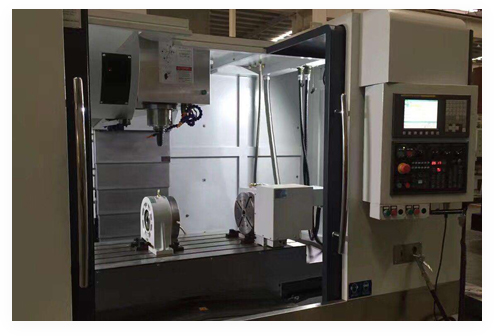Anodizing precision machined aluminum parts can be an effective way to enhance the mechanical properties of a part or improve its aesthetics.
Why might you want to anodize aluminum? There are several good reasons to consider anodizing aluminum parts. Anodizing aluminum creates a layer of oxide and forms a layer on the surface of the aluminum. This layer is so thin that it does not even materially affect the dimensions of precision machined parts. Because the oxide layer is harder than aluminum, it protects the metal underneath, making it scratch-resistant and increasing corrosion resistance.
The oxide layer is also rougher than the surface of aluminum, so you can paint or dye anodized aluminum. In fact, you can add any color you like to an anodized aluminum part. Coloring is accomplished by using dyes during the anodizing process or by applying paint afterwards.
Benefits of Anodized Aluminum PartsAnodized aluminum parts offer many benefits in terms of aesthetics and the mechanics of the part itself.
Visually, the effect is very impressive and the finish is permanent. It's abrasion-resistant, so it will never scratch or fade, and it will never need touch-ups. Plus, it's environmentally friendly.
Mechanically, the anodizing process makes the surface of the part very durable. The oxide is extremely hard and provides excellent protection against wear and corrosion. Thermal insulation is also excellent.
Overall, the process makes precision machined parts look better and more durable.
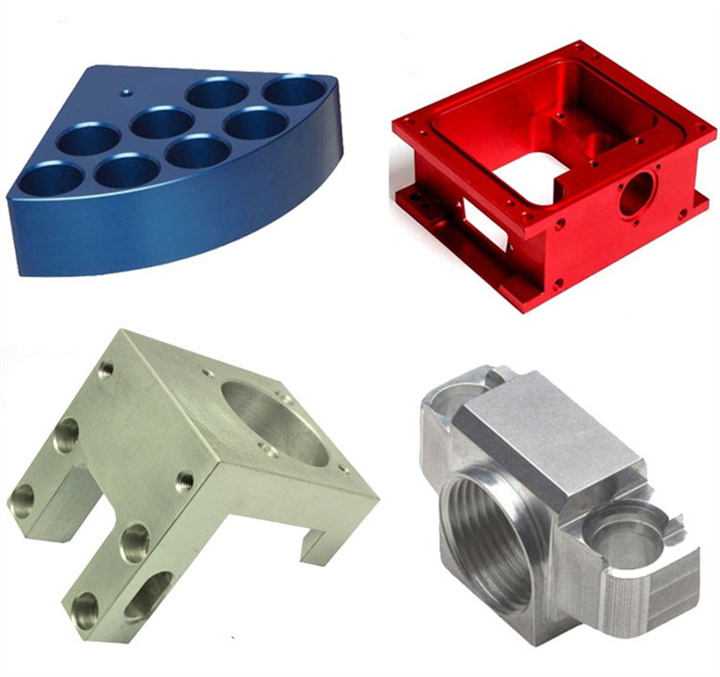
Aluminum is a relatively reactive metal with a standard potential of -1.66 V. It naturally forms an oxide film in air with a thickness of about 0.01 to 0.1 microns. This oxide film is amorphous, thin, porous and has poor corrosion resistance. However, if aluminum and its alloys are placed in a suitable electrolyte, with the aluminum product as the anode, an oxide film forms on the surface under the action of an applied current. This method is known as anodizing.
By selecting different types and concentrations of electrolytes and controlling the process conditions during the oxidation process, anodic oxide films with different properties can be obtained, with thicknesses ranging from about tens to hundreds of microns, and so on, which have been significantly improved and enhanced. The electrolyte used for anodic oxidation of aluminum and aluminum alloys is generally an acidic solution of medium solubility, with lead or aluminum as the cathode, which only plays a conductive role. When aluminum and its alloys are anodized, the following reactions occur at the anode.
2Al -> 6e- + 2Al3+
The following reactions take place at the cathode
6H2O + 6e-> 3H2 + 6OH-
At the same time, the acid chemically dissolves the aluminum and the resulting oxide film in the reaction:: 2Al + 6H+ -> 6H2 + 6OH-.
2Al + 6H+ -> 2Al3+ + 3H2
Al2O3 + 6H+ -> 2Al3+ + 3H2O
The growth process of oxide film is a continuous formation and continuous dissolution of oxide film.
First segment a (curve ab segment): formation of non-porous layer. In the first few seconds to tens of seconds at the beginning of the energization, the surface of aluminum immediately formed a layer of dense oxide film with high insulating properties, the thickness of about 0.01-0.1 microns, which is a continuous layer of non-porous film, called as the non-porous layer or obstacle layer, the emergence of this layer of film prevents the passage of electric current and the continued thickening of the film layer. The thickness of the nonporous layer is directly proportional to the formation voltage and inversely proportional to the dissolution rate of the oxide film in the electrolyte. Thus, the voltage in segment ab of the curve shows a sharp increase from zero to the maximum value.
Second segment b (curve segment bc): formation of the porous layer. With the formation of the oxide film, the dissolving effect of the electrolyte on the film begins. Due to the unevenness of the formed oxide film, holes will be dissolved first in the thinnest part of the film, through which the electrolyte can reach the fresh surface of the aluminum, and the electrochemical reaction can continue with a decrease in resistance and a consequent decrease in voltage (10-15% of the maximum value), and a porous layer appears on the film.
Third section c (curve cd section): the porous layer becomes thicker. After about 20s of anodizing, the voltage enters a relatively stable and slowly increasing stage. This indicates that while the non-porous layer keeps dissolving to form a porous layer, the new non-porous layer grows continuously, that is to say, the formation rate of the non-porous layer in the oxidized film and the dissolution rate basically reach equilibrium, so the thickness of the non-porous layer is no longer increased, and the voltage changes are very small. However, the formation and dissolution of the oxide film at the bottom of the holes do not stop at this time, they continue, and as a result, the bottom of the holes gradually move to the inside of the metal matrix. As the oxidation time continues, the holes deepen to form pores, and the film layer with pores gradually becomes thicker. When the filming rate and dissolution rate reach dynamic equilibrium, even if the oxidation time is prolonged, the thickness of the oxide film will not increase, and then the anodic oxidation process should be stopped. The characteristic curve of anodizing and the growth process of oxide film are shown in the following figure. Anodic oxidation of aluminum and its alloys in dilute sulfuric acid electrolyte with direct current and alternating current can obtain colorless and transparent oxide film with a thickness of 5-20 microns and good adsorption.
Sulfuric acid anodic oxidation process is simple, stable solution, convenient operation, wide range of permissible impurity content, low power consumption, low cost, almost suitable for aluminum and various aluminum alloys, so it is widely used in CNC machining service industry.
 CNC Powder Coating in Healthcare Equipment ApplicationsFebruary 29, 2024In the world of healthcare equipment, precision and durability are of the utmost importance. From monitoring devices to surgical tools, every piece of equipment must be able to withstand the demanding...view
CNC Powder Coating in Healthcare Equipment ApplicationsFebruary 29, 2024In the world of healthcare equipment, precision and durability are of the utmost importance. From monitoring devices to surgical tools, every piece of equipment must be able to withstand the demanding...view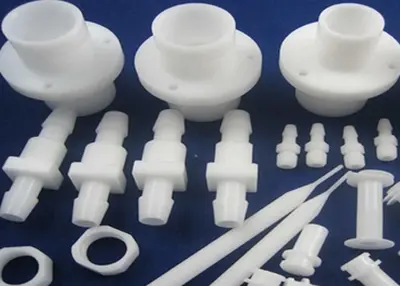 How to Maximize the Effectiveness of CNC Machining Technology?August 14, 2023Positive Innovation of Mechanical CNC Machining EquipmentIn order to maximize the application effect of CNC machining technology, it is necessary to analyze the characteristics of CNC machining ODM te...view
How to Maximize the Effectiveness of CNC Machining Technology?August 14, 2023Positive Innovation of Mechanical CNC Machining EquipmentIn order to maximize the application effect of CNC machining technology, it is necessary to analyze the characteristics of CNC machining ODM te...view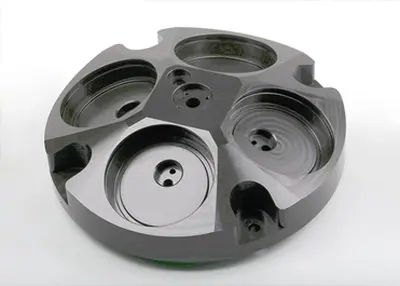 Understanding the Properties of Anodizing Process in One ReadingApril 4, 2023Nowadays, the use of metal technology is quite popular, and many machines in the market have large metal parts. One of the surface treatment processes for metal is anodizing, which is very commonly us...view
Understanding the Properties of Anodizing Process in One ReadingApril 4, 2023Nowadays, the use of metal technology is quite popular, and many machines in the market have large metal parts. One of the surface treatment processes for metal is anodizing, which is very commonly us...view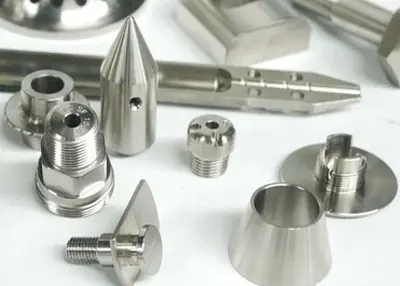 The Complete Guide to CNC Machining Parts: Types, Advantages & DesignApril 3, 2024The following is a thorough introduction to CNC machining parts, which is of great importance for your project. Let’s have a deeper look at these machined parts!view
The Complete Guide to CNC Machining Parts: Types, Advantages & DesignApril 3, 2024The following is a thorough introduction to CNC machining parts, which is of great importance for your project. Let’s have a deeper look at these machined parts!view Electrophoretic Coating Process Details and Electrophoretic Paint Selection GuideJune 17, 2024Electrophoretic Coating is a cutting-edge technology that has revolutionized the manufacturing landscape. By offering consistent, uniform surface coverage along with unmatched durability and corrosion...view
Electrophoretic Coating Process Details and Electrophoretic Paint Selection GuideJune 17, 2024Electrophoretic Coating is a cutting-edge technology that has revolutionized the manufacturing landscape. By offering consistent, uniform surface coverage along with unmatched durability and corrosion...view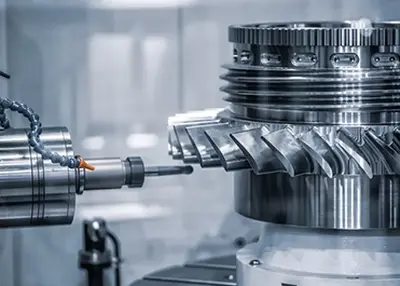 Machining process of connecting rod partsNovember 16, 2023Connecting rod parts play a vital role in the mechanical field and are commonly used in engines, vehicle drivelines, industrial machinery and other applications. In order to ensure their accuracy, reliability and performance, the manufacture of connecting rod parts needs to go through several machining processes.view
Machining process of connecting rod partsNovember 16, 2023Connecting rod parts play a vital role in the mechanical field and are commonly used in engines, vehicle drivelines, industrial machinery and other applications. In order to ensure their accuracy, reliability and performance, the manufacture of connecting rod parts needs to go through several machining processes.view
 EN
EN
 ru
ru 


